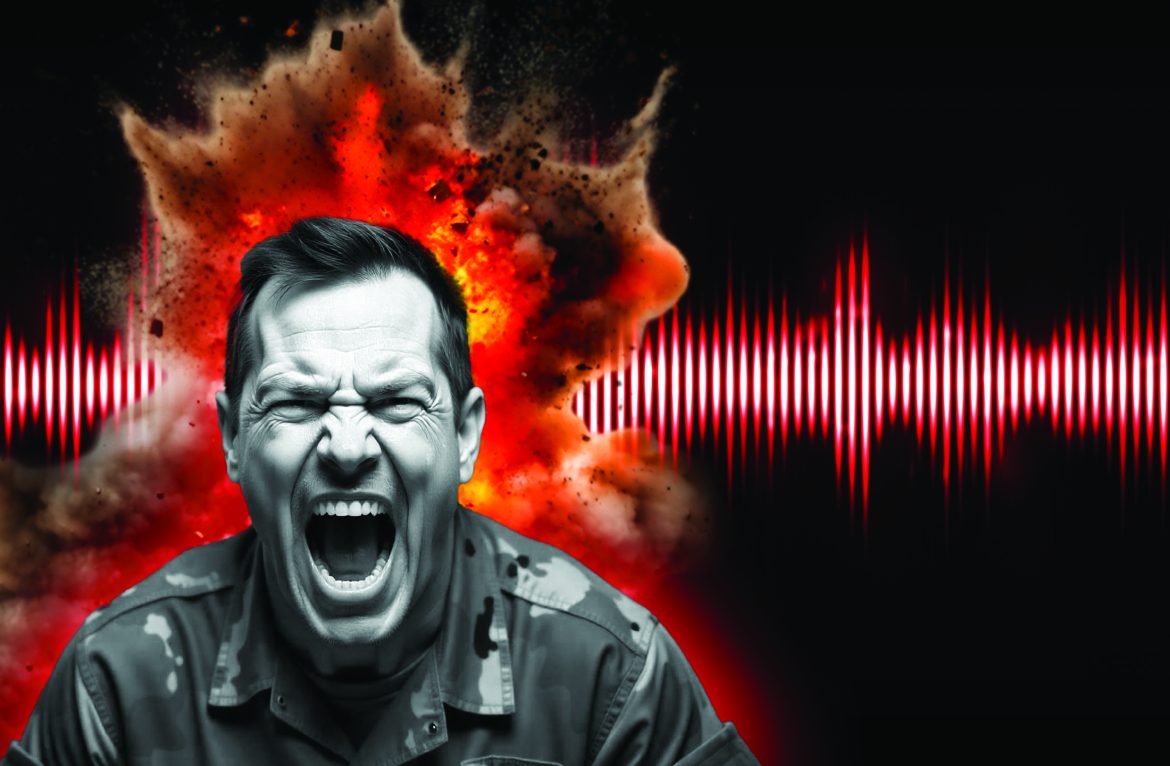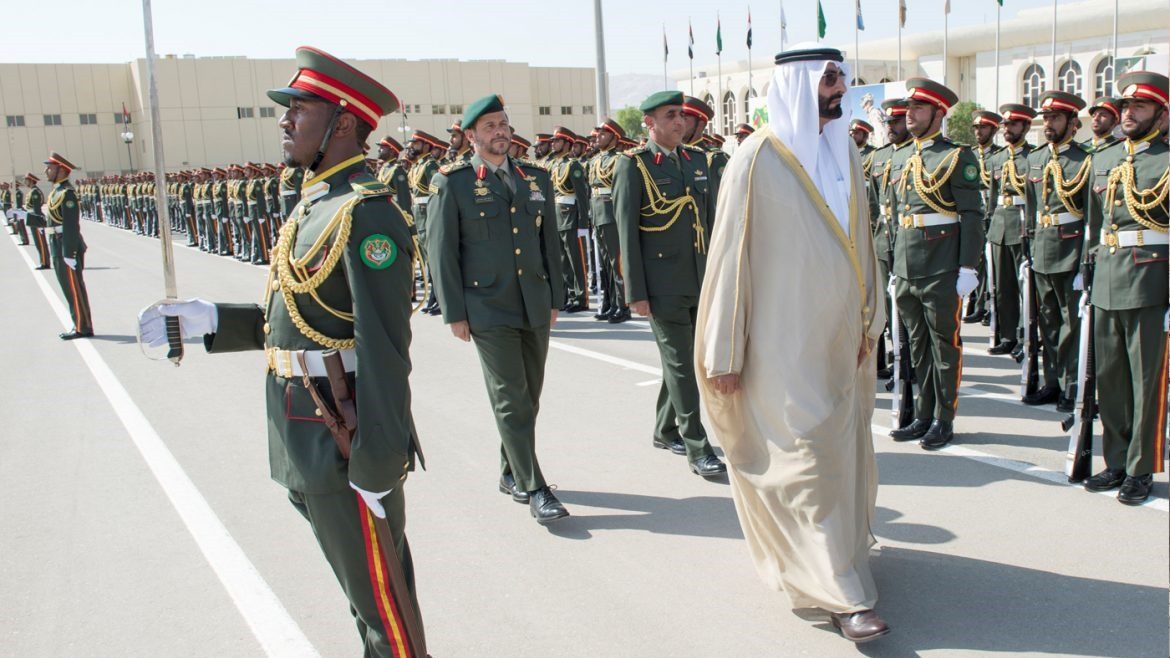The auditory sense plays a crucial role in a soldier’s performance, particularly in communication and responding to commands. Noise-induced hearing loss (NIHL) presents a significant health challenge for military forces, potentially undermining combat readiness. The inability to hear critical audio signals or communication from superiors or adversaries can severely impair a soldier’s operational effectiveness. Given the nature of military occupations, hearing is an essential asset for tactical training and survival, making exposure to high noise levels inevitable during both training and missions. Consequently, NIHL and tinnitus rank as the second most common service-related disabilities globally. Unlike civilians, military personnel often have no option but to operate in noisy combat environments to fulfil their duties.

Despite being a widespread public health issue affecting approximately 1.3 billion people globally, the prevalence of NIHL and tinnitus is notably higher among military personnel than the general population. Virtually every soldier, sailor, airman, or marine encounters hazardous noise levels at some stage in their career. Military Medical Research has reported that tinnitus affects around 10% and hearing loss about 6% of veterans. In Finland, despite the increased use of hearing protection devices, many professional soldiers suffer from tinnitus and hearing loss. Similarly, in the Belgian army, urban combat training and heavy weapon fire are major contributors to hearing loss. A recent study on British army musicians revealed that those working in acoustically hazardous environments, particularly woodwind and brass players, face a higher risk of hearing loss. Preventive measures are crucial, yet soldiers need education and training on the use of hearing protection devices.
Since World War II, the human and financial costs associated with NIHL and tinnitus among veterans have highlighted noise-induced hearing loss as a significant concern. This underscores the critical need to preserve hearing in military activities and environments.
Measuring Noise Levels
Sound Pressure Level (SPL) represents the difference between the average local pressure and the pressure in a sound wave, measured in pascals or micropascals. According to the American National Standards Institute (ANSI S1.1-1994), the lowest sound pressure detectable by the human ear is standardised at 20 micropascals in air and 1 micropascal in water.
Sound intensity is measured in decibels (dB), calculated by the logarithmic ratio of the measured sound pressure to the reference sound pressure. A 10 dB increase indicates a doubling of sound intensity. For instance, rustling leaves measure 10 dB, quiet conversations 40 dB, car horns 110 dB, and gunshots or fireworks 140 dB.
The individual’s response to military noise sources depends on various factors, including sound intensity, duration, frequency, recurrence, daily exposure, personal fear of noise sources, and the perceived effectiveness of military noise mitigation programs.
The noise levels that cause hearing loss vary with exposure duration, noise type, and frequency content, as well as the individual’s susceptibility. A time-weighted average exposure of around 85 dB for 8 hours a day over a 40-hour workweek is considered hazardous. Sustained exposure to noise levels above this threshold requires hearing protection in military settings.
Moreover, many military transport platforms and weaponry can generate internal noise levels exceeding 110 dB during operation. Additionally, pulse noise exposure with peak levels above 140 dB poses significant risks, even with a single exposure.

Sources of Noise in Military Environments
In military settings, noise stems from a variety of loud equipment and operations involved in military activities. These sources include jet engines, helicopters, small firearms, explosives, and heavy weaponry, each with distinct physical and acoustic properties influencing the intensity, distance, and sound direction.
During military testing and training operations, noise arises from aircraft, ammunition detonations, tank and artillery fire, missile launches, and demolition activities.
The noise exposure experienced by soldiers varies according to their mission, often exceeding levels found in other professions, posing significant risks of hearing damage due to hazardous noise levels. For instance, most weapons emit sounds over 140 decibels, generally regarded as the maximum safe limit for unprotected single pulse noise exposure. Soldiers may also encounter hazardous noise during non-combat activities such as construction, maintenance, storage, and engineering or industrial tasks.
Many weapons produce sounds that surpass the maximum protection achievable through dual hearing protection methods, which involve using both earplugs and earmuffs. The US Department of Defense’s monthly medical surveillance report on noise-induced hearing loss highlights that hearing injuries from noise are more prevalent among combat-related occupations. Infantry units, for example, experience high noise levels from their weapons. Table 1 illustrates the noise levels emitted by different weapons.
In naval forces, the highest noise levels are found in engine rooms and patrol boats (98-103 decibels), and on missile launch platforms (120 decibels). In the Air Force, helicopter noise ranges from 97 to 100 decibels, fighter jets from 97 to 104 decibels, jet trainers from 100 to 106 decibels, and transport aircraft between 88 and 101 decibels. Chronic noise exposure in such environments can impair pilots’ hearing.
Heavy-calibre weapons like mortars, howitzers, shoulder-fired missiles, and individual firearms produce hazardous pulse noises, as these systems use larger amounts of propellant, making them significantly more active than small-calibre firearms. With rare exceptions for weapon simulators or other specific training devices, military personnel encounter the same intense sounds during training as in battle. Even during training, there are potentially severe consequences for hearing health, necessitating the reliance on personal protective equipment to mitigate high noise levels.
Determining the total noise exposure timeline during operations is challenging. Given the hazardous nature of military duties and the frequent exposure to pulse sounds, which are difficult to measure accurately in field environments, noise exposure in battlefields is often estimated from task profiles and noise measurements.
The danger associated with high-level noise lies in its ability to cause physical damage to sensitive cells and structures in the inner ear, leading to tinnitus and potentially permanent hearing loss. While these effects may only become apparent after prolonged, repeated exposure to steady-state noise, a single unprotected exposure to pulse noise can cause irreversible damage, depending on individual susceptibility, which cannot be linked to any observable human characteristic. Consequently, environmental advocates caution against any harmful exposure, warning that damage can be permanent and irreversible, treating all noise-exposed individuals as part of the noise-sensitive group.
Exposure/Occupation Matrix
Noise-induced hearing loss is a major preventable condition that can result from acute exposure to intense sound pulses or prolonged exposure to steady-state noise above 75-85 decibels. Military personnel are inevitably exposed to high noise levels at some point, potentially leading to hearing loss, particularly for high-frequency sounds, tinnitus, or both.
Notably, hearing loss or tinnitus occurring or worsening during military service qualifies veterans for financial compensation.
In 2010, the US Veterans Benefits Administration (VBA) released an official Noise Exposure List, a comprehensive matrix designed to assess the likelihood of veterans being exposed to high levels of noise based on service branches (Army, Navy, Air Force), job title, and duty assignment. For example, occupations like infantry soldier, combat engineer, field artillery radar operator, and air and missile defence crew are categorised under high probability exposure. Bridge construction crews, radar repairers, small arms repairers, and military police soldiers fall under medium probability exposure, while intelligence analysts, signal soldiers, image analysts, and drivers are classified under low probability exposure.
When evaluating a veteran’s claim for hearing loss or tinnitus, the Department of Veterans Affairs reviews the veteran’s military occupational speciality and duty assignment in the Noise Exposure List to assess the likelihood of hazardous noise exposure. If the veteran’s role is classified with a high or medium probability of noise exposure and there is sufficient evidence of current disability, the VA will request a hearing loss or tinnitus examination. This test helps determine the medical diagnosis, the connection between the veteran’s noise exposure during service, and the current hearing loss, including the frequency, severity, and duration of symptoms. Additionally, if veteran records confirm combat participation, the VA automatically accepts noise exposure, supporting the hearing loss or tinnitus claim.
Noise Prevention
The US Department of Defense (DoD) is committed to preventing noise pollution by addressing community concerns and sharing information about noise exposure. The DoD works to minimize noise impacts through a combination of mitigation techniques, operational strategies, and land use planning.
Noise Mitigation Techniques:
These methods are designed to reduce noise from military weapons and vehicles, enhancing stealth, improving soldier communication, and reducing noise-induced injuries. One of the latest advancements involves sound-absorbing materials, which decrease noise by absorbing sounds emitted by military equipment. Additionally, integrating advanced propulsion systems, such as quieter engines and exhaust systems, significantly lowers noise levels from military aircraft and ground vehicles. These innovations not only enhance operational stealth but also mitigate the environmental impact of military training on nearby communities and wildlife habitats.
Advanced acoustic engineering technologies have further led to the development of specialized noise-cancelling devices that actively neutralize unwanted sound waves, reducing noise pollution in military environments. Moreover, the introduction of cutting-edge communication technologies, such as encrypted radios and digital signal processing tools, has improved the efficiency and security of information exchange among military personnel, minimizing the need for excessive vocal communication.
By leveraging these advancements, military units can coordinate their operations effectively while maintaining operational security and reducing unnecessary noise disturbances. The continued development of noise reduction technologies within the military underscores a commitment to environmental stewardship and community welfare while ensuring mission effectiveness and readiness.

Operational Strategy:
Reducing noise in military operations requires a comprehensive approach to sound mitigation. This includes conducting noise impact assessments across operational areas, scheduling noisy activities during less sensitive periods, and limiting nighttime operations. Technological solutions, such as noise-cancelling equipment, along with “quiet” testing and training methods like computer simulations and higher flight altitudes, are essential components. Strategic planning also involves collaboration with environmental agencies and communities, establishing clear protocols for noise monitoring and reporting, and continuously evaluating and adjusting noise reduction strategies.
Land Use:
The DoD supports strategic land-use planning around military installations and training ranges to ensure surrounding development aligns with operational needs. This includes implementing noise prevention measures in shooting ranges, training areas, and designated tactical training lands.
By: Retired Colonel Eng. Khaled Al-Ananzah
(Advisor and Trainer in Environmental and Occupational Safety)





















